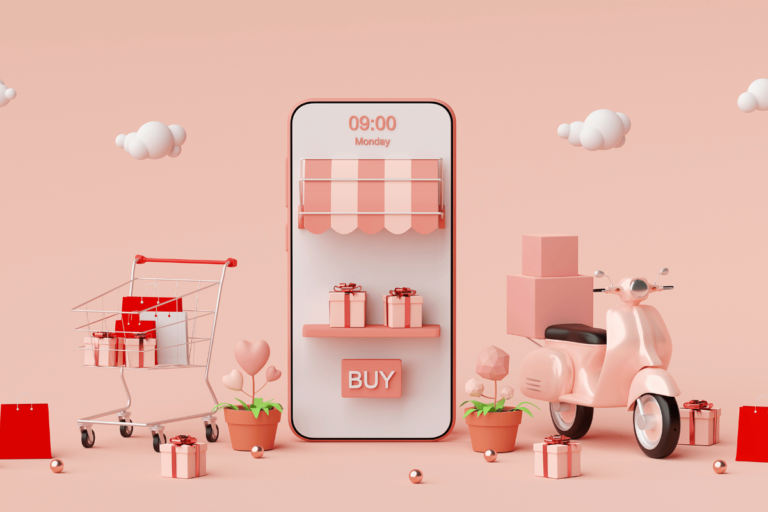How to Make Money as an Interior Designer
Are you passionate about interior design and want to turn it into a profitable venture? Many believe that being an interior designer only offers limited income opportunities. But did you know that with the evolution of AI, now you can create hundreds of interior design ideas in seconds off your customer, offering innovative and efficient solutions for a successful interior design business?
From exploring digital design services to licensing your designs, setting up an eCommerce site, offering specialty consultations, and even writing and publishing, the possibilities are endless. In this article, we will explore the various avenues you can pursue to monetize your interior design skills and increase your income. Get ready to unlock the secrets of financial success in the interior design industry!
Key Takeaways:
- There are numerous ways to make money as an interior designer, beyond traditional design services.
- Digital design services, licensing, eCommerce, and specialty consultations are just a few avenues to explore.
- Writing and publishing, teaching, and creating video content can also generate additional income.
- Diversifying your income streams and exploring various opportunities can lead to a successful and profitable interior design business.
- By implementing these strategies, you can turn your passion for interior design into a lucrative career.
Digital Design Services
With the advancement of technology, interior designers have the opportunity to expand their services beyond traditional in-person consultations. Digital design services have emerged as a convenient and efficient way to provide design expertise online, catering to clients’ evolving needs and preferences. By embracing digital platforms and offering virtual design consultations, interior designers can tap into a vast market and generate income from the comfort of their own workspace.
Offering Various Levels of Design Services
One of the significant advantages of digital design services is the ability to offer a range of service levels to accommodate different clients and budgets. From basic design consultations to comprehensive room transformations, interior designers can tailor their offerings to meet specific needs. By providing options such as space planning, color schemes, furniture selection, and decor recommendations, designers can cater to clients seeking varying degrees of assistance.
Furthermore, interior designers can utilize their expertise to offer specialized digital products that cater to specific design needs. This includes providing digital guides, mood boards, and virtual room visualizations that assist clients in visualizing their design concepts.
Charging Flexibility and Accessibility
One of the attractive aspects of digital design services is the flexibility it provides in charging fees. Designers can price their services based on various factors, such as project complexity, time commitment, and their level of expertise. By offering a range of pricing options, from affordable packages to premium services, interior designers can cater to a diverse clientele.
The accessibility of online design services also eliminates geographical constraints and allows designers to work with clients worldwide. Virtual meetings and consultations can be conducted using video conferencing platforms, creating a seamless and efficient communication channel. This accessibility opens up new opportunities for interior designers to reach clients in different locations, expanding their reach and potential client base.
Virtual Design Consultations and Engagements
Virtual design consultations have become increasingly popular, allowing interior designers to connect with clients remotely. These consultations encompass various aspects of the design process, including initial briefings, concept presentations, and ongoing collaborations. Through digital platforms and tools, designers can share design ideas, material samples, and 3D renderings, providing clients with an immersive design experience.
Focused SketchUp, a program designed to enhance proficiency in the software for rendering SketchUp, has emerged as a pivotal tool in this digital arsenal. It empowers designers to craft detailed and interactive 3D models, allowing clients to visualize spaces with exceptional clarity and realism.
Furthermore, interior designers can leverage their digital design services to engage clients through interactive workshops, webinars, and online design courses. This not only generates additional income but also establishes the designers as industry experts and thought leaders.
Benefits of Digital Design Services
There are several benefits to offering digital design services:
- Convenience: Clients can access design services from anywhere, eliminating the need for in-person meetings and site visits.
- Time and Cost Savings: Virtual consultations save time and money for both designers and clients by reducing travel expenses and minimizing logistical challenges.
- Expanded Reach: Digital design services allow interior designers to tap into a global market, reaching clients beyond their local area.
- Flexibility: Designers can offer a variety of service levels and pricing options to cater to different client needs and budgets.
- Improved Communication: Virtual platforms enable seamless communication between designers and clients, fostering better collaboration and understanding.
By embracing digital design services and leveraging virtual consultations, interior designers can unlock new opportunities for business growth and establish themselves as industry leaders in the digital age.
| Digital Design Services | Key Features |
|---|---|
| Virtual Design Consultations | Remote collaboration and communication with clients, sharing design ideas and concepts through digital platforms. |
| Digital Product Ideas | Offering specialized digital products such as design guides, mood boards, and virtual room visualizations. |
| Charging Flexibility | Providing a range of pricing options to accommodate different budgets. |
| Expanded Reach | Accessing a global market and working with clients from different locations. |
| Convenience and Time Savings | Eliminating the need for in-person meetings and site visits, saving time and travel expenses. |
Licensing and Branding
One effective way to expand your interior design business and generate passive income is through licensing your designs and establishing a strong brand presence. By partnering with manufacturers and collaborating with a licensing agent and marketing team, you can reach a wider audience and increase your sales and revenue.
When you license your designs, you grant permission to manufacturers to use your work on their products. This allows your designs to be sold in various retail outlets, giving you greater exposure and the potential for higher profits. Additionally, licensing agreements often include royalty payments, providing you with a steady stream of passive income.
To make the most of interior design licensing, it’s crucial to establish a strong and recognizable brand. Your brand is a reflection of your unique style and approach to design, and it helps you stand out in a competitive market. By branding your look and creating a cohesive design language, you can establish a distinct identity that resonates with clients and consumers.
Collaborating with a licensing agent can greatly enhance your licensing efforts. A licensing agent serves as a bridge between you and potential manufacturers, helping to negotiate deals, protect your intellectual property rights, and maximize licensing opportunities. With their expertise and network, they can connect you with the right manufacturers and ensure that your designs are licensed to reputable companies.
Marketing your interior design brand is also essential in attracting customers and increasing sales. By implementing strategic marketing campaigns across various channels, you can create buzz and generate interest in your designs. This may include showcasing your work on social media platforms, participating in industry events and trade shows, and utilizing online advertising and PR campaigns.
| Benefits of Licensing and Branding | Steps to Establish Your Interior Design Brand |
|---|---|
|
|
By leveraging interior design licensing, establishing a strong brand, and partnering with the right manufacturers, you can enhance your business’s visibility, increase sales, and generate additional income. This approach allows you to focus on what you do best – creating exceptional designs – while maximizing the reach and impact of your work.
eCommerce and Reselling
One of the profitable avenues for interior designers to explore is the world of eCommerce and reselling. By leveraging the power of online marketplaces, interior designers can showcase and sell their curated collection of home products, including unique vintage pieces and sought-after antiques. This enables them to reach a wider audience and generate additional income from their design expertise.
When it comes to reselling home products, sourcing high-quality items is crucial. Interior designers can visit local antique stores, participate in auctions, explore flea markets, or attend antique shows to find unique and valuable pieces. By carefully selecting items that align with current design trends and the interests of their target audience, designers can ensure a profitable venture.
To maximize the visibility of their online marketplace, interior designers need to implement effective marketing strategies. Leveraging social media platforms such as Instagram, Facebook, and Pinterest can help them showcase their products to a larger audience. By creating visually appealing posts, engaging with followers, and collaborating with influencers in the design industry, designers can attract potential buyers and establish their brand presence.
Designers should also consider the importance of an optimized eCommerce website. This includes ensuring an intuitive user interface, easy navigation, and secure payment options. By providing a seamless online shopping experience, designers can build trust with their customers and encourage repeat business.
Here is an example table showcasing the potential profit margins for reselling home products:
| Product | Cost Price | Selling Price | Profit Margin |
|---|---|---|---|
| Antique Coffee Table | $200 | $500 | $300 |
| Mid-Century Armchair | $150 | $400 | $250 |
| Vintage Chandelier | $250 | $800 | $550 |
As seen in the table, reselling home products can yield significant profit margins when designers curate desirable and unique pieces. By continuously sourcing new inventory, staying updated with current design trends, and delivering exceptional customer service, interior designers can establish themselves as reputable sellers and build a profitable eCommerce business.
Business Coaching and Education
If you excel in a specific area of the interior design business, you can offer business coaching, workshops, webinars, or other educational programs to aspiring designers. By sharing your expertise and providing guidance on topics such as branding, marketing, and project management, you can generate additional income while helping others succeed in the industry.
One option is to provide business coaching services, where you can work one-on-one with interior designers to help them develop their business strategies and achieve their goals. This can involve offering personalized advice, conducting business assessments, and providing ongoing support and accountability.
In addition to coaching, you can also host workshops and webinars for interior designers looking to enhance their skills and knowledge. These sessions can cover a variety of topics, such as effective client communication, project planning, and creating a profitable interior design business.
Sharing your expertise and providing guidance on topics such as branding, marketing, and project management can generate additional income while helping others succeed in the industry.
Furthermore, educational programming can be an excellent way to reach a broader audience and create passive income streams. You can develop online courses or create instructional materials, such as e-books or video tutorials, that provide in-depth insights and practical tips for interior designers at various levels of experience.
By offering business coaching and education, you not only generate additional revenue but also establish yourself as a trusted authority in the industry. Your expertise and guidance can empower aspiring interior designers to overcome challenges, achieve their goals, and create successful businesses of their own.
| Benefits of Business Coaching and Education for Interior Designers |
|---|
| Gain valuable insights and guidance from industry experts |
| Enhance your business skills and strategies |
| Expand your professional network through workshops and coaching sessions |
| Access practical resources and materials to accelerate your growth |
| Create passive income streams with educational programming |
Specialty Consultations
As an interior designer, offering specialty design consultations can be a valuable source of additional income. These consultations focus on specific areas of expertise, such as color briefings and space planning, allowing you to provide targeted design solutions to clients in need of specialized advice.
By packaging these consultations as stand-alone offerings, you can cater to clients who may not require comprehensive interior design services but are seeking expert guidance in specific areas. This approach enables you to maximize your earning potential while avoiding direct competition with designers offering more comprehensive packages.
Color briefings are a popular specialty consultation where you provide insights and recommendations on color schemes, palettes, and incorporating color psychology into the space. This can be particularly helpful for clients who struggle with color selection or want to create a specific atmosphere in their home or office.
Space planning consultations involve assessing the layout and functionality of a room or space. You can offer advice on furniture placement, traffic flow, maximizing square footage, and optimizing the use of available space. These consultations are valuable for clients looking to make the most of their existing space without undergoing a full-scale redesign.
“Specialty design consultations allow you to showcase your expertise in specific areas, positioning yourself as an authority in the industry. By offering valuable insights and tailored solutions, you can attract clients seeking specialized design expertise.”
To market your specialty consultations effectively, it’s essential to target the right audience. Consider reaching out to homeowners, businesses, or individuals in need of focused design assistance. Leverage social media platforms, online forums, and local networking events to promote your services and engage with potential clients.
Keep in mind that while specialty consultations can be a lucrative revenue stream, it’s important to clearly define the scope of your services and set appropriate pricing. This ensures transparency and avoids any misunderstandings or unrealistic client expectations.
Incorporating specialty design consultations into your interior design business can diversify your service offerings and attract clients seeking specific expertise. By positioning yourself as a trusted source of specialized design knowledge, you can increase your earning potential and create a sustainable and profitable business.
Writing and Publishing
Writing and publishing an interior design book or ebook is an exceptional way to share your knowledge and experiences with a wider audience. By offering valuable insights, tips, and practical advice, you can attract readers who are interested in interior design and potentially even new clients.
“Writing a book allows you to establish yourself as an authority in the industry and showcase your expertise. It’s a powerful tool for building your brand and attracting opportunities.”
Self-publishing ebooks has become increasingly accessible, thanks to digital platforms and online marketplaces. This allows you to bypass traditional publishing routes and retain complete creative control over your work. Moreover, it opens up opportunities to generate passive income from your written content.
When writing your book, consider focusing on a niche within the interior design industry. This will help you target a specific audience and differentiate yourself from other authors. Some popular niche topics include:
- Color psychology in interior design
- Home staging and selling techniques
- Green and sustainable design
- Specific design styles (e.g., Scandinavian, Art Deco)
- Designing for small spaces
Once you have written your book, leverage digital platforms such as Amazon Kindle Direct Publishing or Smashwords to self-publish and distribute your ebook. These platforms offer extensive reach and potential for exposure, enabling you to tap into a vast audience of avid readers looking for design inspiration and guidance.
Be sure to optimize your book’s metadata by incorporating relevant keywords related to interior design and your niche. This will improve your book’s discoverability in search results and increase the chances of attracting organic traffic.
Consider offering a free chapter or exclusive content as a lead magnet to capture readers’ email addresses and build your email list. This will allow you to nurture relationships with your audience and promote future book releases or other paid products and services.
Remember, writing and publishing a book is not only about generating income but also about establishing your authority, building your brand, and leaving a lasting impact on the interior design community.
Teaching and Virtual Sessions
Sharing your expertise by teaching in-person or virtual sessions can be a rewarding way to earn additional income. Design institutions and aspiring designers often seek hands-on experience and guidance from experienced professionals. By offering virtual sessions or recorded tutorials, you can provide valuable educational resources and generate income without the need for extensive travel or time commitments.
Virtual design sessions allow you to engage with students or clients from the comfort of your own workspace. Through video conferencing platforms, you can provide interactive lessons, demonstrations, and personalized feedback. Whether you specialize in interior design principles, space planning, or color psychology, online teaching offers flexibility while reaching a global audience.
Benefits of Virtual Design Sessions:
- Convenience: Eliminate the need for physical class locations or client meetings, saving time and resources.
- Wider Reach: Expand your teaching opportunities beyond local boundaries and connect with students or clients from around the world.
- Flexible Scheduling: Accommodate different time zones and offer sessions at convenient times for participants.
- Cost-Effective: Reduce expenses related to travel, accommodation, and venue rentals, maximizing your earnings.
- Interactive Learning: Utilize screen sharing and interactive whiteboards to enhance the learning experience and foster collaboration.
Setting Up Virtual Design Sessions:
To get started with online teaching, follow these steps:
- Choose a Platform: Select a video conferencing platform that suits your needs and offers features such as screen sharing, recording, and chat functionality.
- Create a Curriculum: Define the course structure and outline the topics you will cover. Ensure your curriculum is well-organized and engaging for participants.
- Prepare Course Materials: Develop supporting materials such as presentations, handouts, and exercises to enhance the learning experience.
- Promote Your Sessions: Advertise your virtual design sessions through your website, social media platforms, and relevant industry forums.
- Collect Payments: Set up an online payment system to securely process course fees and provide participants with access to your sessions upon payment.
- Engage and Interact: During your sessions, encourage participants to ask questions, provide feedback, and engage in discussions to create an interactive and dynamic learning environment.
By leveraging online teaching and virtual design sessions, you can share your knowledge, mentor aspiring designers, and generate additional income, all while expanding your reach and impact within the interior design community.
YouTube and Video Content
Creating a YouTube channel dedicated to interior design can be a highly effective way to showcase your design expertise, engage with a wide audience, and monetize your passion. By producing regular and engaging video content, you can establish yourself as an authority in the industry while providing value to your viewers.
Video tutorials are a particularly popular form of content on YouTube. They offer a visual representation of your design process, allowing viewers to learn and apply your techniques in their own projects. Whether it’s demonstrating interior design principles, sharing DIY tips, or showcasing renovation projects, video tutorials provide an immersive learning experience.
“Video tutorials provide a unique opportunity to visually guide and inspire your audience, helping them understand complex design concepts and techniques.”
Attracting a Loyal Following
When creating video content for your interior design YouTube channel, it’s essential to consider your target audience and their interests. Tailor your videos to provide valuable insights, tips, and inspiration that resonate with your viewers. By consistently delivering high-quality content and engaging with your audience through comments and discussions, you can foster a loyal following and encourage viewers to share your channel with others.
Collaborations and Partnerships
As your YouTube channel grows, you may have opportunities to collaborate with other YouTubers, brands, or industry professionals. Collaborations can help you expand your reach, attract new subscribers, and gain credibility within the design community. Consider reaching out to fellow interior designers, home décor brands, or even local businesses for potential partnerships that align with your channel’s content.
Exploring monetization options for your YouTube channel can also be beneficial. For example, you may qualify for the YouTube Partner Program, allowing you to monetize your videos through ads. Additionally, sponsored content and affiliate marketing can generate income by promoting products or services that align with your channel’s niche and audience.
Engagement and Feedback
Engaging with your audience is key to building a successful YouTube channel. Encourage viewers to leave comments, ask questions, and share their thoughts on your videos. Responding to comments and actively participating in conversations demonstrates your expertise and shows that you value your audience’s input.
“By actively engaging with your audience, you can foster a sense of community and establish trust and credibility as an interior design influencer.”
Seek feedback from your viewers to continually improve your content. Pay attention to the types of videos that receive the most engagement and replicate their success while experimenting with new ideas to keep your content fresh and exciting.
Designing Visually Engaging Videos
When it comes to video content, visual appeal matters. Take the time to create aesthetically pleasing videos by focusing on camera angles, lighting, and editing. High-quality visuals contribute to a professional and captivating viewing experience, enhancing the overall value of your channel.
Furthermore, consider incorporating graphics, infographics, and animation to visually enhance your videos. These elements can help simplify complex concepts and make your content more engaging and informative for your audience.
| Key Strategies for a Successful Interior Design YouTube Channel | Benefits |
|---|---|
| Consistent upload schedule | Increases audience engagement and loyalty. |
| High-quality video production | Enhances the overall viewing experience and professionalism. |
| Collaborations with industry professionals | Expands reach and credibility within the design community. |
| Engaging with viewers through comments and discussions | Fosters a sense of community and builds trust with the audience. |
| Utilizing monetization options such as ads and sponsorships | Generates income and financial incentives for content creation. |
By investing time and effort into creating a successful interior design YouTube channel, you can establish yourself as a leading authority, attract clients, and open doors to exciting collaborations and partnerships within the interior design industry.
Additional Income Streams
Aside from the main sources of income for interior designers, there are several other opportunities to generate additional revenue and diversify your earnings. By exploring these various avenues and expanding your skill set, you can create a sustainable interior design business and boost your financial success.
In-Home Consultations
Offering in-home consultations is a valuable side hustle for interior designers. Many clients appreciate the personalized touch and convenience of having a professional assess their space and provide tailored design recommendations. By charging a fee for your time and expertise, you can earn extra income while assisting clients in transforming their homes.
Rendering and Drafting Services
If you have expertise in rendering and drafting, you can monetize your skills by offering these services to clients. From creating professional floor plans to producing detailed 3D renderings, clients often seek these visual representations when planning their interior projects. By charging a competitive rate for your services, you can earn passive income by providing high-quality visual representations.
Affiliate Marketing
Affiliate marketing is another lucrative opportunity for interior designers to earn passive income. By partnering with relevant brands and promoting their products or services through your online platforms, you can earn a commission for every sale or referral generated through your unique affiliate links. This can be particularly beneficial if you have a strong online presence or a niche audience that aligns with certain brands.
Designing and Selling Digital Products
Creating and selling digital products is an excellent way to generate passive income as an interior designer. This can include design templates, mood boards, color palettes, and other digital assets that clients can purchase and use in their own design projects. With minimal ongoing effort on your part, these products can provide a steady stream of revenue while showcasing your unique design aesthetic.
Collaborating with Brands and Manufacturers
By partnering with brands and manufacturers, you can secure additional revenue streams through collaborations and product endorsements. This may involve designing limited-edition collections, becoming a brand ambassador, or offering your design expertise for product development. These partnerships can not only generate income but also enhance your visibility within the industry.
By diversifying your income streams and exploring these additional revenue sources, you can maximize your earning potential as an interior designer. Whether it’s through in-home consultations, rendering and drafting services, affiliate marketing, or selling digital products, these opportunities allow you to leverage your skills and expertise while creating a sustainable and profitable interior design business.
Conclusion
In conclusion, the key to building a profitable interior design business lies in monetizing your skills and embracing the various opportunities available in the industry. By leveraging your expertise and tapping into digital platforms and technologies, you can expand your reach and attract a broader client base. Whether it’s offering digital design services, licensing your work, setting up an eCommerce store, or providing coaching and education, there are numerous avenues to explore for financial success.
To create a sustainable and lucrative career, it’s essential to stay focused on your goals and continuously seek new revenue streams. By combining your passion for interior design with strategic business decisions, you can establish yourself as a reputable professional and increase your earning potential. Remember, success in this field requires creativity, adaptability, and a dedication to providing exceptional service to your clients.
As you embark on your journey to financial success in the interior design industry, make sure to stay up-to-date with the latest trends, technologies, and marketing strategies. Continual learning and professional development will not only enhance your skills but also keep you ahead of the competition. With a strong foundation and a proactive mindset, you have the power to transform your passion for interior design into a thriving and prosperous business.







